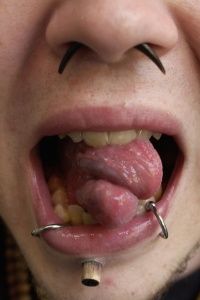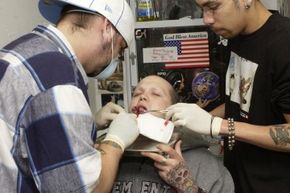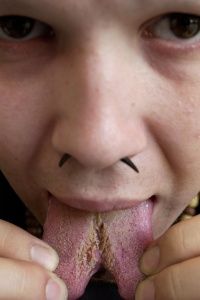In 1997, 20-year-old Dustin Allor appeared in issue 16 of the indie magazine Body Play. The magazine had long been known for bringing tattoo and piercing aficionados the cutting edge in new trends, designs and techniques, but this article featured something no one had really seen before. Allor was sporting a split tongue, a procedure she had performed on herself about a year earlier. Though she wasn't the first person to split her tongue, her appearance in Body Play is widely credited with kicking off the tongue-splitting craze -- one of the most popular and fastest-growing body modification trends of the past 20 years [sources: Medical Bag; Pitts-Taylor].
Body modification is a catch-all term for things like tattoos, piercings and scarification, essentially any form of permanent or semipermanent alteration to your body. Tongue splitting, which is quite literally splitting your tongue down the middle lengthwise to produce two smaller, independently moving tongues, is merely one of the more recent -- and some say controversial -- subcategories of body modification.
Advertisement
But as controversial as tongue splitting may be, it's important to remember that for pretty much as long as we humans have been around, we've had this funny tendency to alter our bodies in one form or another. Most major cultures past and present have participated in the process in various ways -- and whatever seems "normal" to us is generally influenced by where and when we were born. For instance, different cultures throughout history (and even today) have practiced things like foot binding, lip gauging and head flattening.
The point is, whether affirming or rejecting either a dominant culture or a subculture, body modification is closely linked to processes of identity creation -- for us both as individuals and as part of larger social systems. And in some way or another, a really huge portion of the human population takes part in it, even if only in some very small way.
Cultural identification only tells part of the wild story of tongue splitting and why someone might do it. We've got a lot to get to, so let's get right down to it.




